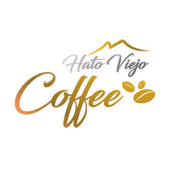Coffee arrived in the Dominican Republic more than 300 years ago. With my country’s colonization by Spain, Torrefacto, the process by, which the coffee was roasted, arrived along with it. As a child, I watched my grandmother, and then my mother, use this method to roast the coffee everyone drank. The tradition was passed down for generations.
Torrefacto, a particular process of roasting coffee beans with sugar, has it’s roots in practicality. When the beans are roasted with sugar, the sugar leaves behind a glaze on the beans that helps preserve them for longer. It was a cheap and effective means of extending the shelf life of the roasted beans. It also provided the added benefit of masking some of the less appealing aroma and taste characteristics in the lower grade Robusta coffee- which tends to be stronger and more bitter than the Arabica variety. Common in Spain and Portugal, the roasting method spread with colonization, and arrived in the Americas.
While torrefacto still has a place in the coffee industry, it really isn’t the same. From what I have seen in pictures of the torrefacto practice in our modern world, it looked very much like the raw sugar was added to the beans after it was roasted. To my understanding, that isn’t torrefacto. Everything I was taught tells me that the sugar has to cook with the coffee itself in order to penetrate the beans.
I have talked about the smoothness of the coffee I grew up drinking, about how the coffee I found in the states didn’t seem to compare. That is true. I will, however, admit that the process also sometimes adds a bit of a burnt flavor to it. When I took Dan home, and my mother presented to him the precious gift of a cup of freshly roasted coffee, he didn’t add sugar to it, because he didn’t drink sugar in his coffee. He would later tell me it had tasted burnt. I hadn’t thought much about it, because we had always added sugar- I now think that the roasting process might be one of the main reasons so many Latin countries add sugar to brewed coffee.
Times, and the industry, have changed since I was a child. Though I send coffee home to the family, and they buy national brands back home, from time to time, my mother still roasts coffee at home, using the only method she knows- torrefacto. She tried roasting the beans without sugar, but it didn’t stay fresh as long. She also noticed that the weight of the beans was off from what she had expected- it turns out that the sugar added weight. Roasted without it, the coffee lost 15-20% of its original weight.
When I visit the DR, we roast coffee to remember. The aroma takes us back to a time when torrefacto coffee, and this place, Hato Viejo, were a part of our daily lives.
The green coffee is placed in a pan over an open fire outside. Between the scent, and a fair amount of smoke, especially after adding the sugar, you really couldn’t hide the process even if you wanted to, and it really has to be done outside. As it starts to cook, the beans turn from green to yellow, then brown and dark, keeping the beans moving around the pan continuously, so that it roasts evenly and doesn’t burn. When the color darkens to the preferred roast (we’d call it a light dark- a full city roast,) we add the raw sugar, and keep it moving. Once the sugar is cooked, it is all poured out onto a tray to cool and dry. What you end up with is almost the consistency of hard coffee candy. The next day, it is ready to be ground, which we usually do by hand, using a pestle (pilón.) We usually used a colander to ensure the grind is fine enough, and then use the greca or el colador (a pour-over coffee brewer.) We add our sugar to taste.
It is always the best coffee- the coffee I drink with my family, together in our home.
Hugs
Yani
